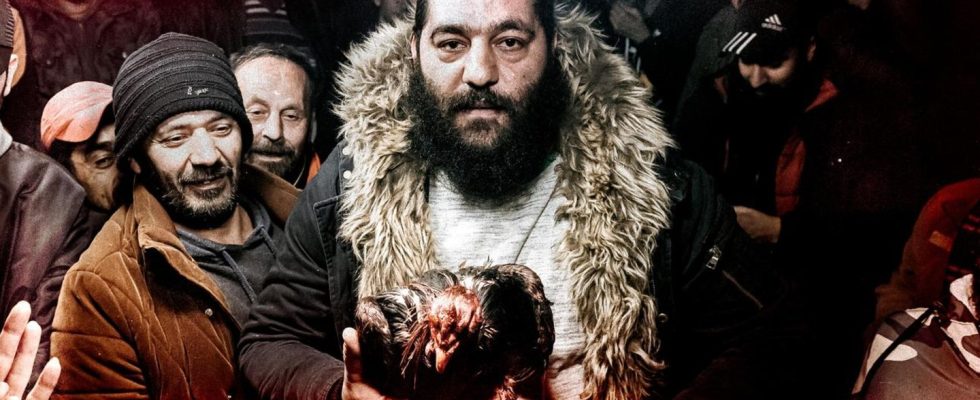A neighborhood in the south of Beirut. The state has little to report here. Clan leader Ali Shahrur all the more for it. A photographer was allowed to accompany him
When Karine Pierre first met clan leader Abu Hassan Shahrur, he raised his arm and pointed his index finger at her. The message was clear: don’t you dare take a picture of me!
The story could end here. The photographer could have gotten scared, said thank you in a friendly way and left the house on the southern outskirts of Beirut as quickly as possible. But she did something else: she offered to make the picture just for him, as a gift. And if he doesn’t want a picture – fine too. The situation relaxed: he posed, showing his thick tattooed upper arms. “And if you can take one picture,” says Karine Pierre, “you can take thousands.”
The kids are playing with one of Ali’s roosters.
© Karine Pierre
His closest confidants call him Ali. Abu Hassan Shahrur is one of the most powerful men in Ghubeiri Municipality. Ghubeiri belongs to the Dahiyeh, the southern suburban region of the Lebanese capital. Here, together with the Amal movement, the Shiite Hezbollah militia is particularly influential, whose armed wing has been listed by the EU as a terrorist organization and has been subject to a ban on activities in Germany since 2020. It is one of the poorest areas of Greater Beirut, south of the Palestinian refugee camp of Shatila, a patchwork of narrow streets through which Sabra Street runs: market stalls are lined up here, and motorcyclists and pedestrians can hardly get through during the day. The Lebanese state is absent here: the army does not enter the area, and a few corrupt police chiefs only come to shop or collect bribes. Here the clans rule. The most powerful among them: the Shahrur family.

